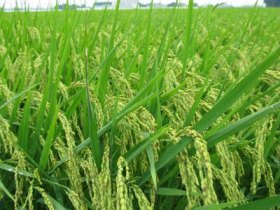Japan supports rice feeding to animals

Eggs and meat from chickens and pigs that were raised on domestic feed rice are drawing a great deal of attention in Japan lately, as a means to help increase the country’s self-sufficiency in feed.
Paying 850 yen (€7.50) for a rice omelette is not a problem at the Rana Cru cafe restaurant in Tsukuba, Japan. It is one of the most popular items on the menu.
The omelette is white in contrast to a more common yellow colour. The pale colour is because the hens that laid the eggs for the omelette were fed rice instead of maize in their ration, causing the egg yolk to have a much paler colour.
The eggs used at the restaurant are produced on the farm of Seiyo Obata. Two years ago, when prices of imported maize soared, he began using locally produced rice for feed.
The egg-laying rates on his farm have not changed, and consumers have praised the eggs as having a light, delicious flavour.
Higher egg price
Obata’s eggs are also sold in Tokyo, through the consumer cooperative Tohto Co-op, under a brand name. A pack of six eggs is priced at €1.75 (198 yen).
Despite the comparatively high price of eggs from chickens fed with rice, there have been successful attempts to develop more local brands.
Given their success, more chicken farms are likely to use feed rice in the future.
Feeding rice to pigs
Pork from pigs fed with feed rice has also appeared. For example, Pork Land Group, a pig farming company, has sold pork from pigs that ate feed rice for two years.
Sales of the pork have been brisk and consumers say the meat is chewy and delicious. This year, the company plans to ship meat from 18,000 pigs, five times the amount last year.
The pork costs about 90 €cents (100 yen) more per kg than other pork sold by the co-op.
The increasing use of feed rice is expected to raise Japan’s self-sufficiency in food. About 90% of the feed ingredients for the chickens are imported.
Seiji Nobuoka, an associate professor of Tokyo University of Agriculture said, "The Japanese livestock industry’s most important task is to escape from its reliance on imported feed. I want consumers to understand the significance of introducing rice as livestock feed."
Different variety
The variety of rice grown as animal feed in Japan differs from that produced for human consumption. Although animal-feed rice tastes too dried-out and unpleasant for people to enjoy, it takes less care and trouble to grow it. This means feed rice is a high-yielding variety.
According to the Agriculture, Forestry and Fisheries Ministry, 1,611 hectares were planted with feed rice in 2008, a sharp increase from 292 hectares in 2007. The figure was expected to reach 4,129 hectares in 2009.
Producing rice for animal feed is attracting farmers’ interest recently due to soaring prices of imported feeds.
The production increase also has been boosted by a subsidy system introduced this fiscal year by the Democratic Party of Japan-led government to improve the nation’s self-sufficiency in food through efficient use of rice paddies.
Subsidies
Under the system, a farmer is granted €7,030 (80,000 yen) per hectare for growing rice for animal consumption or other crops if he or she meets an actual demand.
According to the ministry, rice for animal feed sells at about 26 €cent (30 yen) per kilogram, far less than the price of rice for human consumption, which costs €1.76-2.20 (200-250 yen) per kilogram.
The subsidy system aims to help farmers who grow rice for animal feed secure incomes equivalent to those of farmers producing rice for human consumption.
The system is also meant to support the government’s policies of trimming rice production and improving the nation’s self-sufficiency in food.
Price challenge
Although feed rice is cheap compared to rice for human consumption, rice for animal feed is priced 50% higher than imported corn for animal feed. How this price difference could be minimized is a major challenge.
Other challenges include establishing efficient distribution channels for domestic animal-feed rice, along with storage facilities separate from those where rice for human consumption is kept.
Rice farmers are also concerned about how long the government will be able to continue the subsidy system under the nation’s difficult fiscal conditions.











